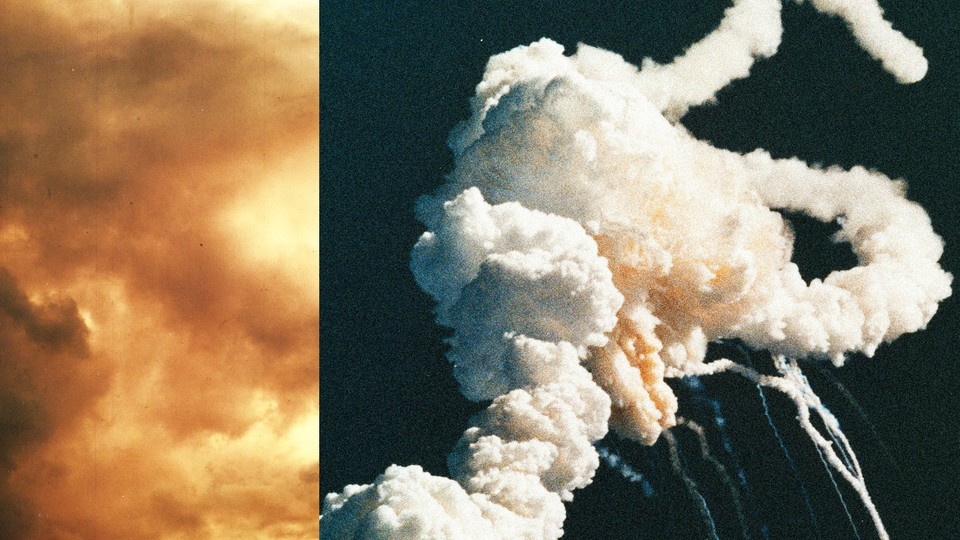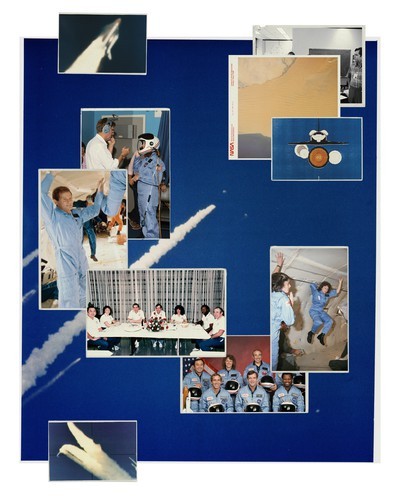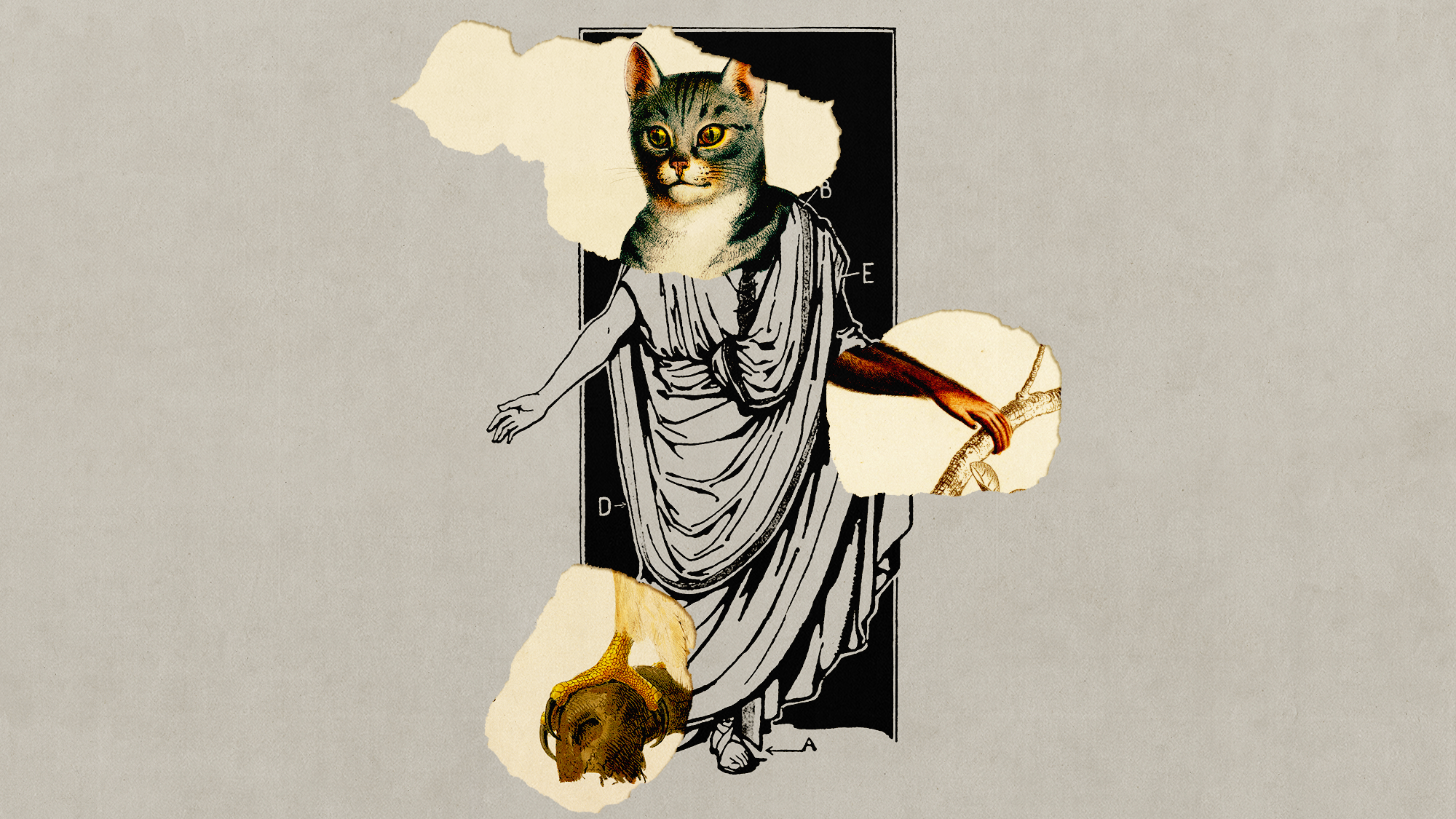The Long View of the Challenger Disaster
5 min read
This is an edition of the Books Briefing, our editors’ weekly guide to the best in books. Sign up for it here.
There were moments in Adam Higginbotham’s new book Challenger that made me gasp and flip to the endnotes. I wasn’t looking to find the story’s denouement—I already knew what happened on the morning of January 28, 1986: The space shuttle Challenger broke apart just over a minute into its voyage, killing all seven astronauts aboard. But Higginbotham had so fully reconstructed the events, including the inner thoughts of people who died nearly 40 years ago, that while writing about the book, I just needed to answer the question: How could he possibly know that? How could he relay what was happening in NASA’s disparate hubs in Texas, Alabama, and Florida? And how could a project like this one, published 38 years after the catastrophe, add new insights to what already exists?
First, here are four new stories from The Atlantic’s Books section:
- Nine books about aging, growing, and changing
- Confessions of an Ozempic-taker
- When the culture wars came for the theater
- Stop trying to understand Kafka.
The immediate answers lie mostly in the end matter. There, Higginbotham reveals that he relied on extensive interviews with surviving family of the Challengercrew, in addition to supporting material from engineers, contractors, and astronauts. He mentions four years of trawling through archives and oral histories, submitting FOIA requests, sending emails, and talking with people; the notes in the finished book are 63 pages long, in tiny script, and followed by a robust bibliography. Higginbotham had ample material to pull from—many diagrams, reports, and testimonies exist because the disaster was covered extensively from nearly the second the shuttle disappeared in a ball of orange flame and white vapor. What he adds is depth made possible by time.
The author himself notes that much of the available writing about Challenger is extremely technical, and that his aim was to tell a human story. His descriptions of the astronauts, their families, their feelings, and their grumbles, quirks, and beliefs, made me think at times of the work of the writer Alex Kotlowitz, whose books—such as his lauded exploration of life in Chicago’s Henry Horner Homes, There Are No Children Here—recount the minute-by-minute thoughts and feelings of their subjects. I took a class with Kotlowitz on narrative nonfiction when I was an undergrad, and learned that the kinds of minute details that make a story come alive are unlocked over time—time spent with your subjects, asking them questions, getting to know them, turning broad sketches of personality into fully realized people. And the experience of reading Challenger made me think of other nonfiction that baffled me with faithfully reconstructed detail—Katherine Boo’s Behind the Beautiful Forevers, Anne Fadiman’s The Spirit Catches You and You Fall Down, David Quammen’s The Song of the Dodo.
But Challenger also highlights something else that’s valuable: the benefit of the long view. Higginbotham’s book simply couldn’t have existed years ago. Perhaps the sources would have been less amenable to talking; the other books he read to inform his work hadn’t yet been written. His structure—beginning with one of NASA’s first fatal disasters, the Apollo 1 fire, and ending with the most recent deaths of NASA astronauts, aboard the Space Shuttle Columbia in 2003—wouldn’t have been possible. And the Columbia accident is a morbid but perfect coda to the book, highlighting just how many lessons the agency failed to learn from its earlier catastrophe.
The tragedy recounted in this book remains as potent as it was in 1986. The number of chances there were to save lives might even make it more painful to revisit. But for a writer, time adds understanding, and it adds weight. Challengeris not forgotten, and neither are its passengers, especially the high-school teacher Christa McAuliffe. But its lessons about resisting pressure and complacency, and about technological progress’s reliance on the human beings running the tech, are especially important in a world of fascinating, hazardous innovation.

What the Challenger Disaster Proved
By Emma Sarappo
We take the workings of wide, complicated technological systems on faith. But they depend on people—and, sometimes, people fail.
Read the full article.
What to Read
Flying Blind, by Peter Robison
In 2018 and 2019, 346 people died in two crashes of malfunctioning Boeing 737 MAX 8 planes. Robison’s investigation into the tragedies asks: How did one of the most respected engineering companies in America produce such fatally flawed aircraft? This account covers the long arc of Boeing’s history and places the blame squarely on the corporate culture that arose after a merger in the late 1990s, which focused on enriching shareholders at the expense of careful engineering. Over the 737 MAX 8’s development, cost-cutting fixes piled up with agonizing implications: Not only had Boeing’s employees created software that resulted in control being wrested from pilots because of a frequently faulty instrument’s signals; they also deleted relevant parts of the plane’s flight manual, and maintained that expensive flight-simulator training wasn’t necessary for the new aircraft. What makes the account riveting, though—and blood-boiling—is Robison’s attention to the stories of the victims and their grieving families. Reading them, one ends up emotionally invested in the workings of commercial aviation, and freshly aware of the great complexity and responsibility underlying an industry that so many of us depend on to work, travel, and see distant loved ones. — Chelsea Leu
From our list: Eight books that explain how the world works
Out Next Week
📚 Any Person Is the Only Self, by Elisa Gabbert
📚 The Great River, by Boyce Upholt
📚 Hip-Hop Is History, by Questlove with Ben Greenman
Your Weekend Read

Animal Behavior’s Biggest Taboo Is Softening
By Katherine J. Wu
“The pressure to avoid anthropomorphism at all costs has lessened,” [Joshua] Plotnik told me. His current studies on elephants, which delve into concepts such as cognition and intelligence, would probably have gotten him laughed out of most psychology departments several decades ago. Now, though, many academics are comfortable describing his study animals as clever, cooperative, and capable of thinking and feeling. This more permissive environment does put that much more pressure on researchers to weigh exactly how and where they’re applying anthropomorphism—and to do so responsibly. But it’s also an important opportunity “to use our anthropomorphic lens carefully,” Kwasi Wrensford, a behavioral biologist at the University of British Columbia, told me.
Read the full article.
When you buy a book using a link in this newsletter, we receive a commission. Thank you for supporting The Atlantic.
Explore all of our newsletters.



